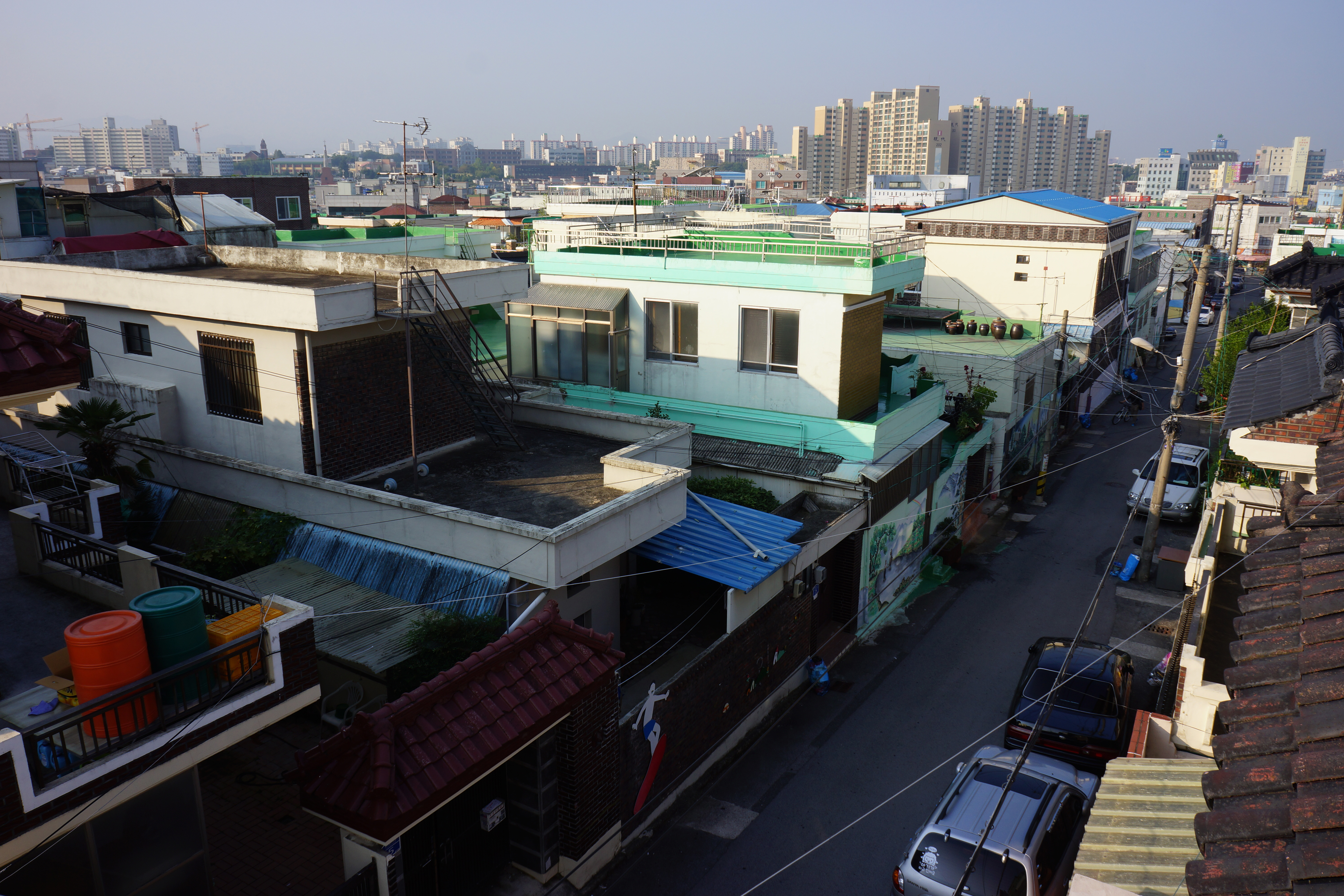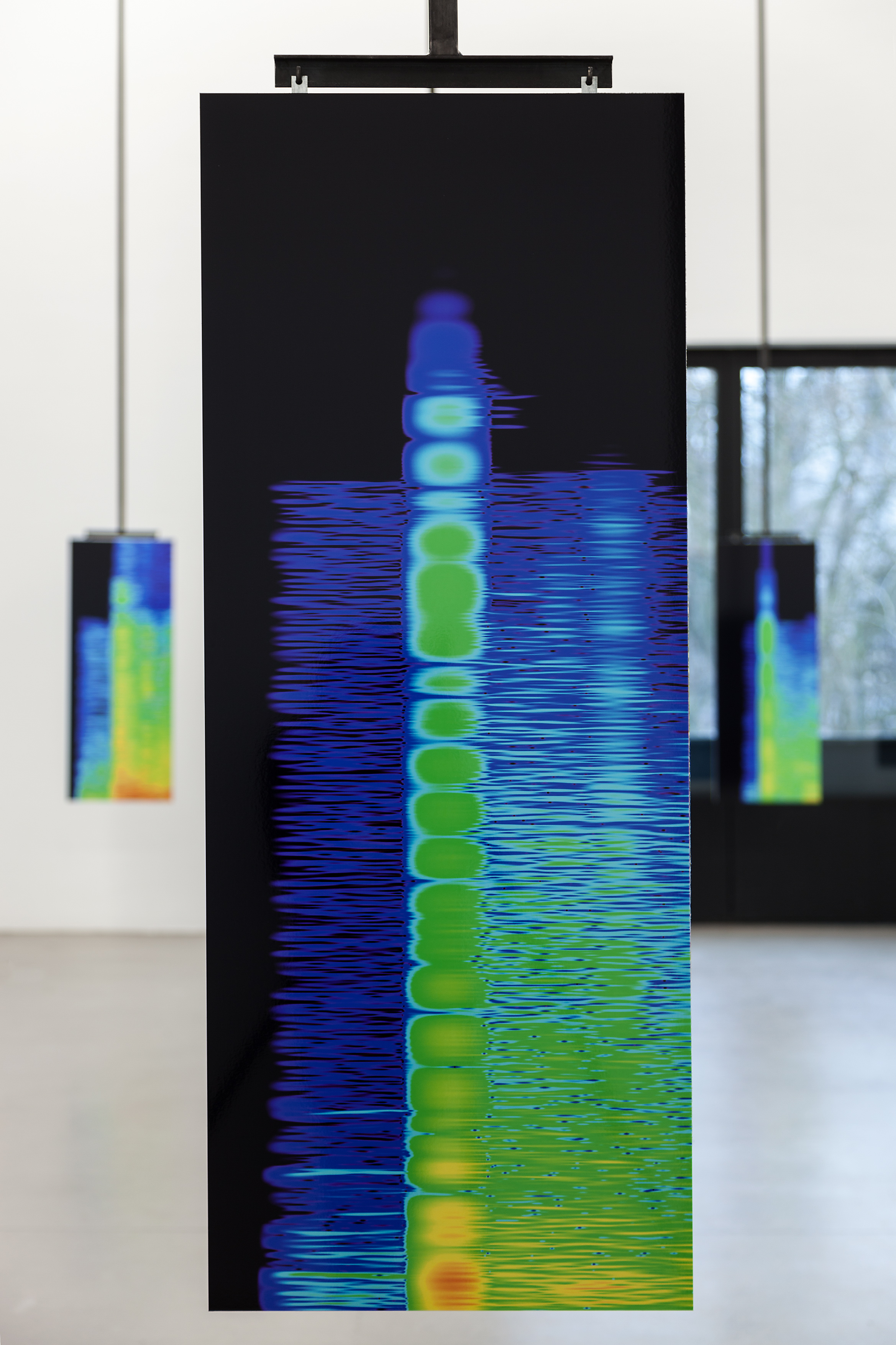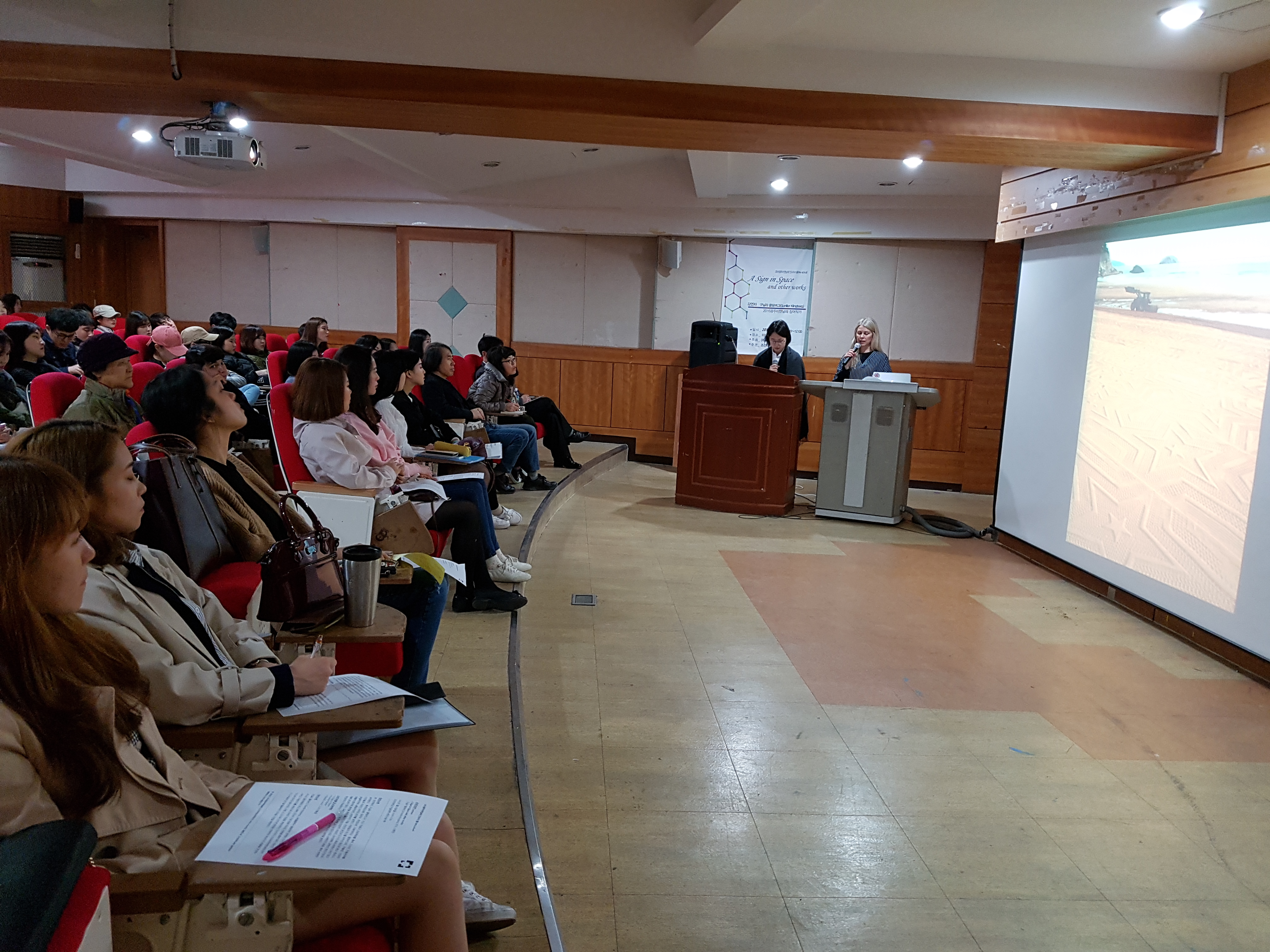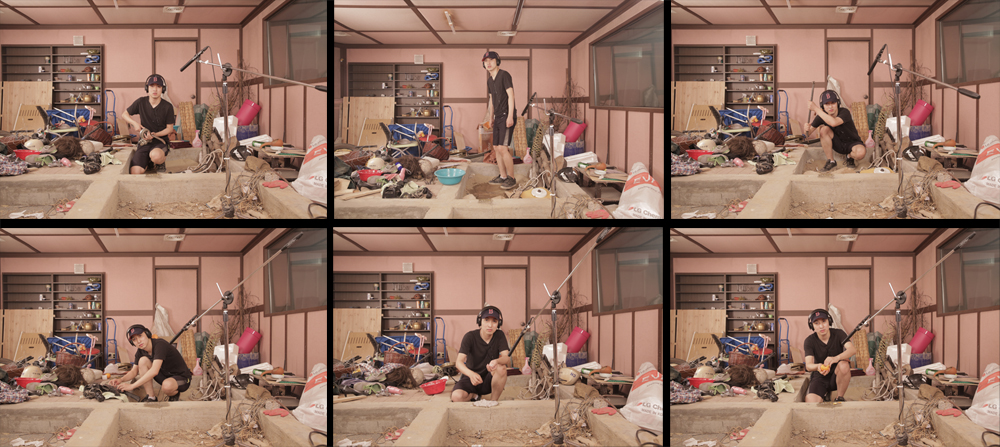Press
Resource Center
Seoul Art Guide Interview
with Maria Lind, artistic director, and Binna Choi, curator
originally published on Seoul Art Guide 2016.8 Vol 176 (Aug. issue)
Due to the effects of gentrification, art’s role in society which used to receive spotlight as the vitalization in stagnation region is receiving skepticism. What are your thoughts on art’s role in society?
ML+BC: In GB11, engagement with “the land” has emerged as one of the concerns that numerous artists are critically and creatively dealing with, and within that gentrification has a given place. For example, Apolonija Sustersic and Dari Bae have been working with the Nuribom community in the Duam-dong area, Gwangju, who feel a strange limbo between an impulse for development and a sense of stagnation. What’s most at stake here is how the community takes into their own hands what it can mean to live in common and take part in planning and any necessary change, not driven by external measures of value and top down urban planning. Forming a habit of gathering, discussion, and making decision together is one of the things that we might expect to happen through this long-term project.

Apolonija Šušteršic with Dari Bae_Master Plan for Duamdong (Co-operative Art Project)
Duamdong, Buk-gu, Gwangju, South Korea, 2016, Courtesy of the artist, Photo credit: Dari Bae
Jeamin Cha also through her video work Fog and Smoke (2012) amplifies a vacuous space abandoned by the withheld developmentalist project in the new city of Songdo. In this video, silence and slowness are juxtaposed by a tap dancer’s movement – its frantic rhythm and sound. There’s a strong tension arising between them, and this space of tension has something to say about the situation.
.jpg)
Jeamin Cha, Fog and Smoke, HD Video, 20'40", 2013 (still)
Any biennale in and of itself has to do with the mentality of development which includes a process of gentrification and top down-processes. The newly opened Asia Culture Center is such a case. While it’s important to resist forces which centralize capital and precarize the weaker even weaker, we think it’s equally important to seize and increase our own agency wherever and whenever it’s possible. Without being afraid of change.
Art is a form of understanding with a special ability to deal with contemporary reality, thanks to its radical multi-facetted character. As such it helps us make the simplified more nuanced, the incomprehensible possible to grasp and the unknown imagined. Which is why we in GB11 want to place it center stage!
It has been notified through the press that in order to differentiate with the previous editions of the Gwangju Biennale, focus has been directed upon newly rising artists and local community. What kind of methods are being carried out?
ML+BC: Our focus has been working with artists who are active in the present yet engaging with the future. However, this does not mean that the focus has been talent development or ageism. Someone like Marie-Louise Ekman has been active as an artist since the 60s and is now re-making her earlier painting. An artist like Lawrence Abu Hamdan may well fit the “newly rising artist” but we are interested in his singular, mind-awakening form of inquiry into how legality is often performed so absurdly in our time.

Lawrence Abu Hamdan, Rubber Coated Steel, 2016 HD digital video still
In terms of the local art scene, we have on many occasions been hearing about unresolved gaps between the Gwangju Biennale and local groups despite its enormous success internationally. The Foundation had an ambition to work on this gap. Methodologically, we are interested in a wide possibility of what we call mediation. Driven by a feeling that each art work always has plenty to offer, but this potential rarely being sufficiently tapped into, we emphasize mediation between art works and people. Instead of merely scratching the surface of pieces of art we have been facilitating all kinds of points of connections – establishing contact and conflict zones beyond viewing an art work in an exhibition space. In this sense mediation includes well-known formats like guided tours, workshops, meetings, lectures, screenings and discussions but also new ways of engaging with the work in question. Known in different parts of the world as “education”, “learning” and “programming”, mediation in the context of GB11 is based on finding and establishing shared concerns between art works, artists, other cultural producers and people, individuals, as well as groups and organizations. It is not aiming at consensus but rather underlines inquiry, debate and unexplored possibilities.
One concrete example is Teatime with the Biennale, a series of bi-monthly meetings taking place during March-November 2016. The purpose is for the staff of the Gwangju Biennale Foundation, the curatorial team and the neighborhood, its inhabitants and people active there, to have a chance to get acquainted. Different groups are invited to the biennale buildings for informal gatherings on Sunday afternoons, facilitating comments and queries relating to GB11. Each meeting involves a short introduction of both the Gwangju Biennale Foundation and the current edition, and the guests also introduce themselves. Among the invitees are the shop and restaurant owners of the neighborhood, inhabitants in the residential buildings right next door and teachers from local schools. The latter turned out to be particularly committed, with an expressed curiosity provoked by art and how it goes public through the Gwangju Biennale Foundation. Recurring topics brought up by the guests during those meetings have been costs of entrance tickets to the exhibition and the quality of the tours for schools.
A important aspect in this edition is also that there is a curatorial team, in addition to us two consisting of assistant curators Azar Mahmoudian, Margarida Mendes and Michelle Wong who all have been deeply involved in this process of mediation.
Please explain the selection procedure and standards/criteria of the participating artists.
ML+BC: Since September 2015, close to 25 artists have been invited to Gwangju to make new work, artists whose practices according to the curatorial team are strong and relevant today. One ambition with this measure is working towards embedding this edition of the biennale on site, taking into consideration local materials, techniques and skills, to be presented inside as well as outside the Gwangju Biennale Foundation’s exhibition space. The oeuvres and methodologies of this first wave of GB11 artists indicated the direction of the exhibition, and eventually several methodological and thematic patterns or strands have appeared, for example “above and below ground”, “the right to opacity” and “new subjectivities”. Subsequently, another 75 artists have been invited to show existing work, which strengthen and complicate the various strands.
And, studio visits, actual meeting with artists, hearing and learning about their practice as well as exchange, has been central to this process. This means to avoid curating as merely cerebral approach of “selecting” based on a theme or a purpose but encounter and experience-based as to be sensitive to art works but also relationship-building, rather than one selecting another.
Recently, there have been criticisms on how large-scale art events like the biennale have been treating artists and their artworks as if they were components of a machinery. What is your opinion on this topic?
ML+BC: This is a very valid criticism. Many biennale organizations would benefit from learning from how small and medium scale visual arts organizations tend to care for art and artists, in a less fordistic manner. This is one of the reason why we are organizing the Forum To All the Contributing Factors (2-4 September 2016) and created the “Biennale Fellows” by inviting about a hundred small to mid scale art organizations all around the word. Being aware of the “machinery risk”, and hence without having any ambition being perfect in avoiding it, one of our great joys in working on GB11 has been those moments of timeless conversation and exchanges during the monthly Monthly Gathering and Infra-School (January-November 2016).
The Monthly Gatherings are made in collaboration with the art collective Mite-Ugro, who function as the local curatorial associates of GB11, and are based on the perceived needs of the art scene in Gwangju, including setting up an art and theory book collection based on donations, group discussions about work by local artists and curated walks addressing current issues in the city. Infra-School is based on plugging GB11 artists and curators into existing educational institutions in Seoul and Gwangju, ranging from Seoul National University to RAT school of art to Chosun University and the Gwangju International Center, thereby creating various forms of exchange between visitors and residents.

Infra-School Chosun University, Gunilla Klingberg presentation
The Monthly Gatherings and Infra-School reflect an art-centric and artist-led interest in how art works and practices, as well as artists, can be the basis of an exchange between local, regional, national and transnational agents, using resources which “are already there”, rather than inventing something entirely new. Gathering between 10 and 80 people each time, they put an emphasis on depth and intensity, rather than quantity and representation, or in other words, informality rather than formality. In other words, let minors proliferate to create a mass.
During the exhibition period, some of the components of both the Monthly Gatherings and Infra-School will move from their respective sites, i.e the Mite-Ugro project space in downtown Gwangju and the various educational institutions in Gwangju and Seoul, and take place inside the exhibition space or otherwise in close proximity to art projects being elsewhere.
We have heard that your connection and relationship with Korea started in the year 2010. What is the characteristics of the Korean artists and their artworks?
ML: My first visit, in 2010, was based on an invitation to lecture on experimental institutional work, and then I returned in 2013 to be a guest professor at the Gwangju Biennale Curating Course, a very important activity of the foundation. Having known and worked with artists Koo Jeong-a and Haegue Yang before, during the 2013 visit I came across the great work of siren eun young jung and Bona Park, both of whom are in GB11. It has been very interesting for me to get to know art from Korea better, which is also reflected in the selection for GB11 with participants such as Sojung Jun, Joungmin Yi, Jewyo Rhii with Jihyun Jung, and Seola Kim. The work that I find most intriguing in Korea tends to be made by women, and it often has a fascinating quirkiness to it, at the same time as it is precise and engaged with real conditions.

Bona Park 1967_2015, 1 channel HD video with sound, 12'36', 2015
As an artistic director active in the international world, what are the difficulties that you faced and the fruitful benefits that you reaped?
ML: To be the artistic director of GB11 is a privilege and a pleasure. I have learned so much from the artists, the curatorial team, our various associates and partners. To get to know the city of Gwangju, some of its inhabitants and its history, will surely leave palpable traces both in my work and for me personally. There is a place in a faraway country where I feel specially connected, even a little bit at home!
The research which we have been fortunate enough to make – despite the very short preparation period - has been fruitful, albeit patchy rather than systematic. The hierarchies and working culture in Korea have sometimes been challenging for me but at the same time I take something with me from that too. Maybe some of my approaches have also rubbed off in Korea.
The Gwangju Biennale is such a great institution with a unique history and possibility to combine the best and most urgent among contemporary art from all over the world with the inhabitants of a particular place. I hope that the foundation will stay in tune with current developments internationally regarding art, curating and how to organize a major cultural event, thereby remaining a significant contributor to art and society.